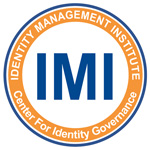|
Fraud Drivers
There are three fraud drivers which facilitate the execution of a fraud. They are Opportunity, Incentive and Justification. Let’s briefly explore them one at a time. For fraud to occur, there must first be an opportunity for fraudsters in order to commit fraud. Depending on the type of fraud, the opportunities might exist abundantly. For example, a cashier might see the opportunity to take money from the cash register if there is no management supervision or watchful recording cameras. In the case of identity fraud, there are also many opportunities in many areas which we can spend countless hours and pages to discuss, however, consider the following example. A doctor might submit false insurance claims under a victim’s name if the insurance company is not confirming the nature of the rendered services with the patient. The known fact that the insurance company is not capable of detecting false insurance claims presents an opportunity for the doctor to take advantage and commit fraud. Once an opportunity has been identified, the fraudster should consider the incentive that a particular fraud might present. Taking the doctor example above, the incentive might be thousands of dollars in additional income per month for undelivered services. Depending on the individual’s expectations, if a fraud incentive provides good value for the given risk and opportunity, then the thought of committing fraud moves one step closer to execution of the idea. And lastly, a good justification for committing the fraud closes the deal. In the same example, a good justification or rationalization on the part of the fraudster might be the fact that insurance companies are making too much at the expense of the doctors and a few dollars out of their pockets are not going to hurt them. As you can see, when it comes to protecting identities against theft and fraud, we can manage the opportunity and incentive fraud drivers to some extent. For example, by properly protecting personal information, we can reduce the opportunity element for committing fraud if we do not give fraudsters a chance to take advantage of our information. And, by limiting credit limits, we can reduce the incentive element to the point where it does not make sense to take a risk and commit fraud. As far as managing the justification element, there is not much consumers can do if fraudsters believe that no harm is done to consumers and only banks and businesses are affected by identity fraud. In which case, I think even fraudsters can benefit from some awareness to understand that not only victims suffer in this process but also the damage resulting from their committed fraud will come back to hunt the fraudsters directly or indirectly because not only Karma never fails but also businesses will pass on the cost of identity fraud to all consumers without discrimination. Consumers must also do their part to avoid becoming fraud accomplice by providing fraud drivers. |